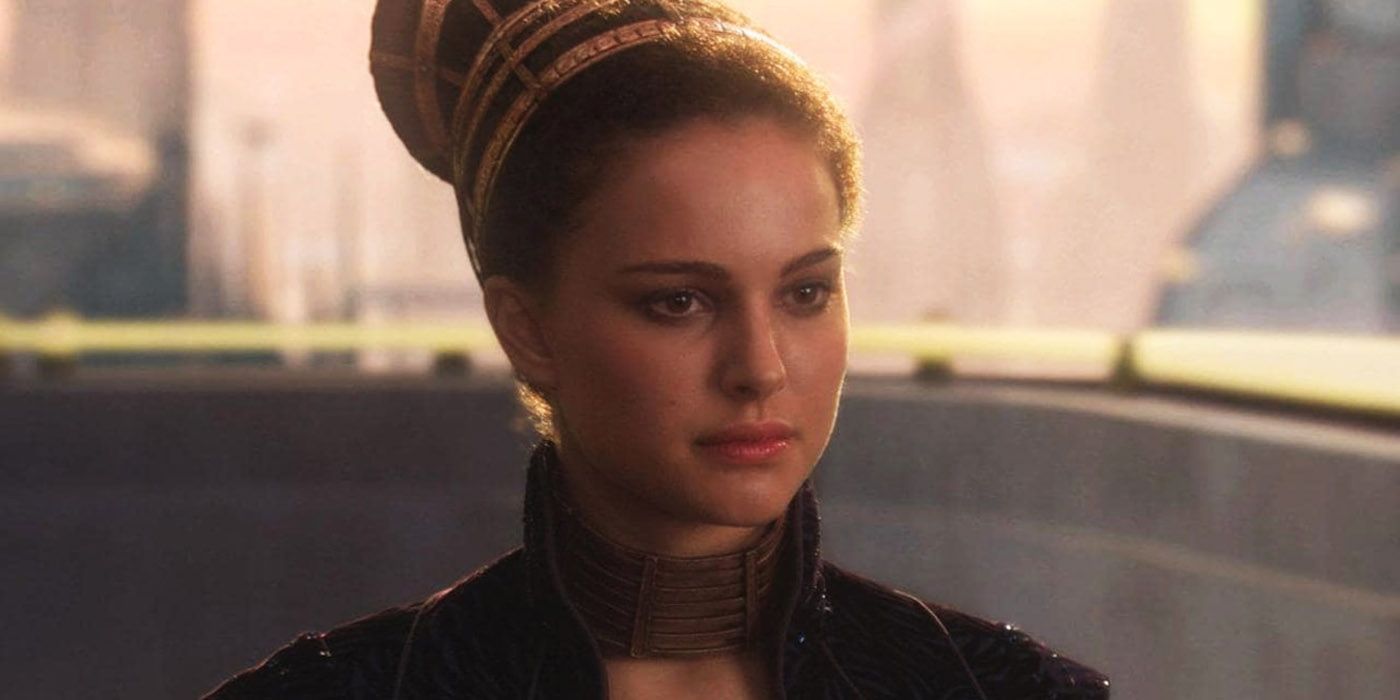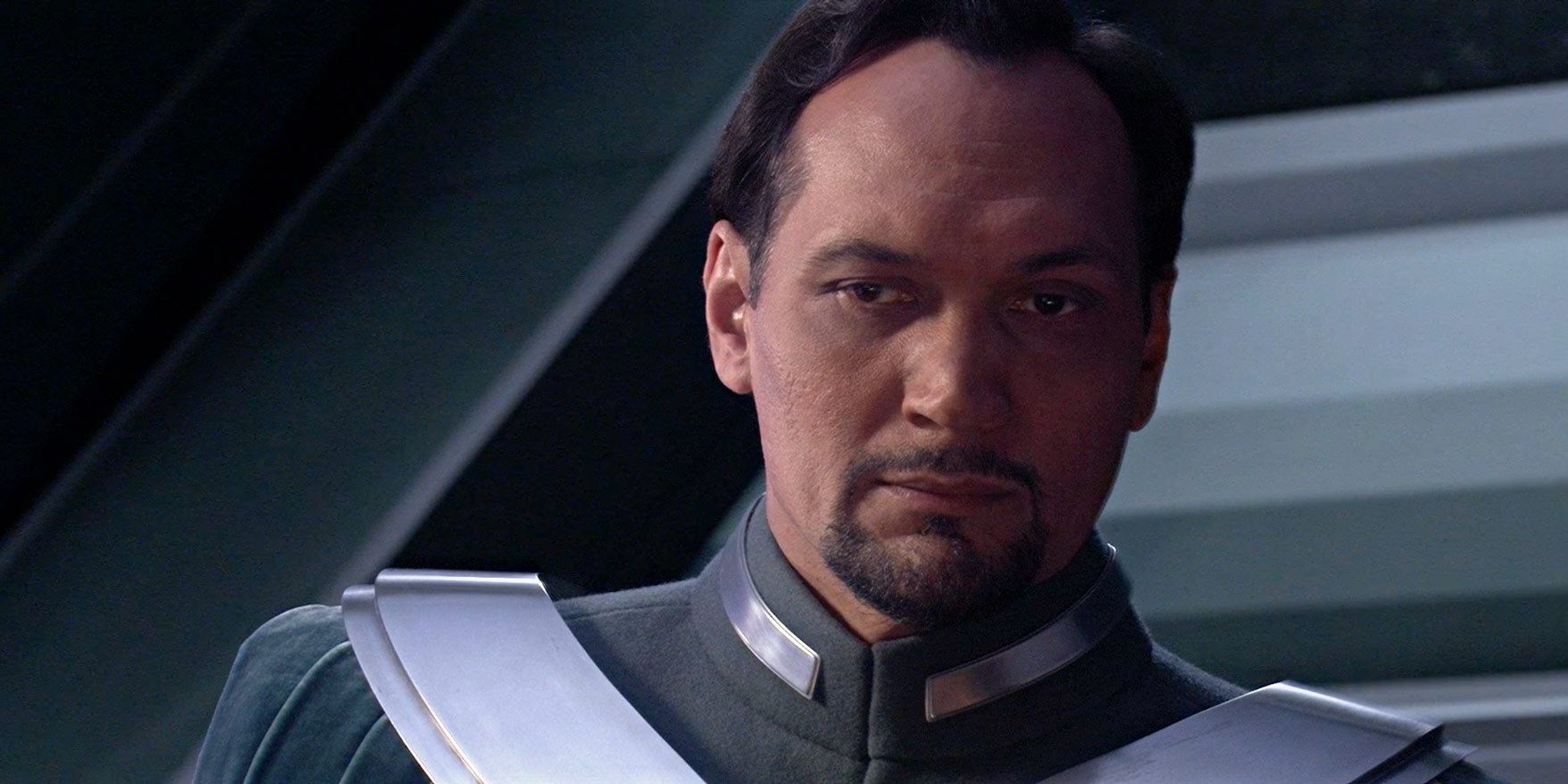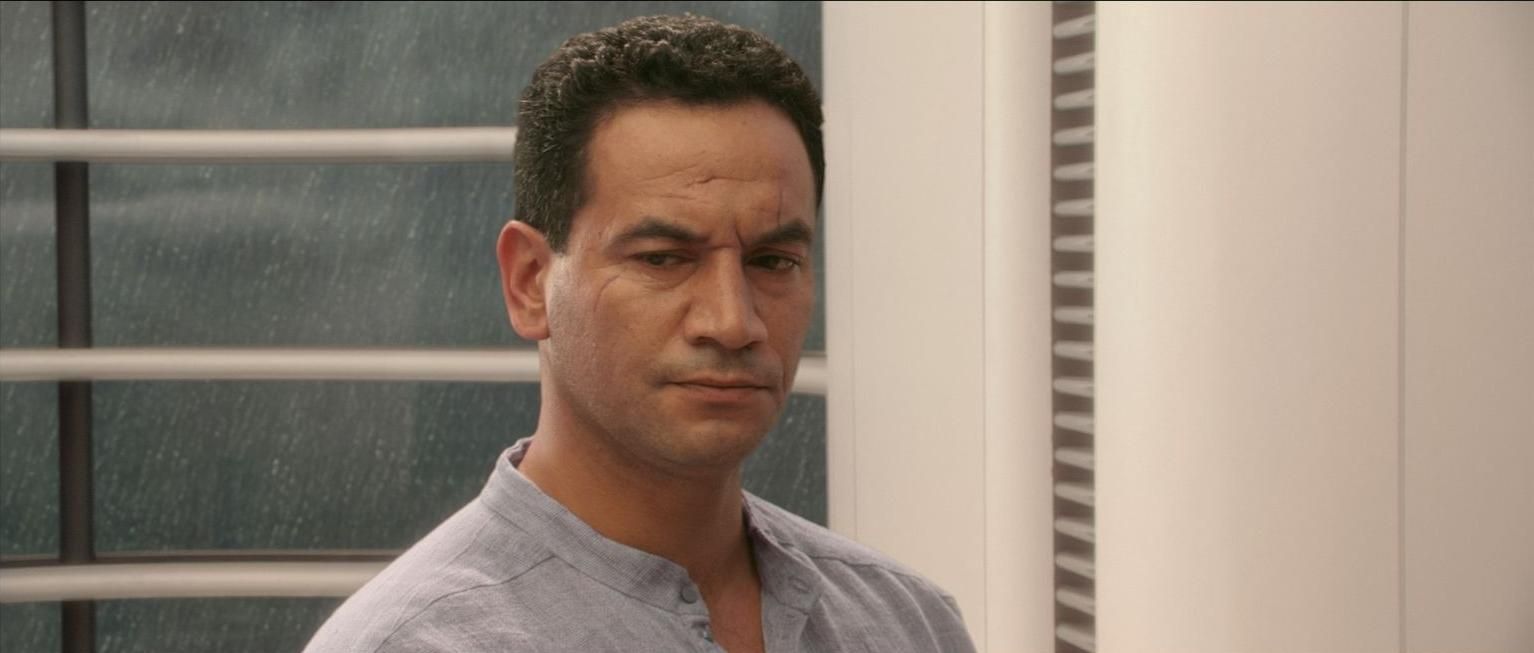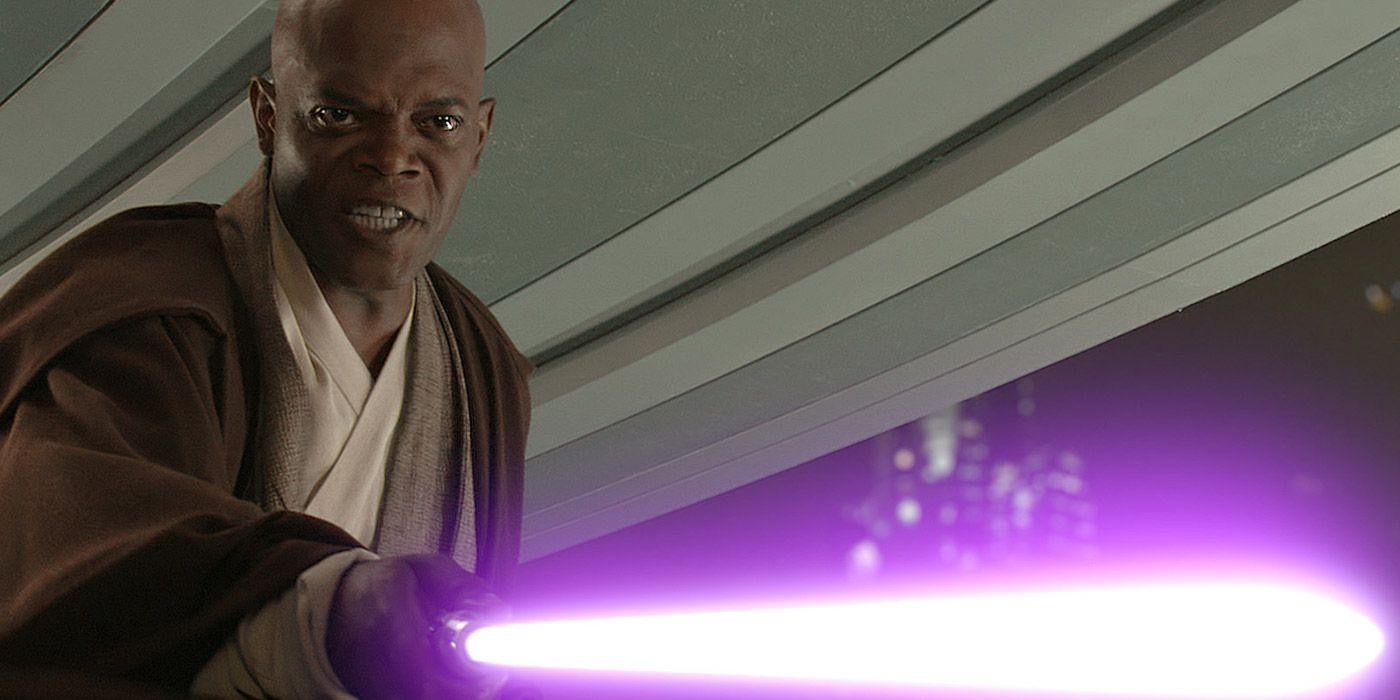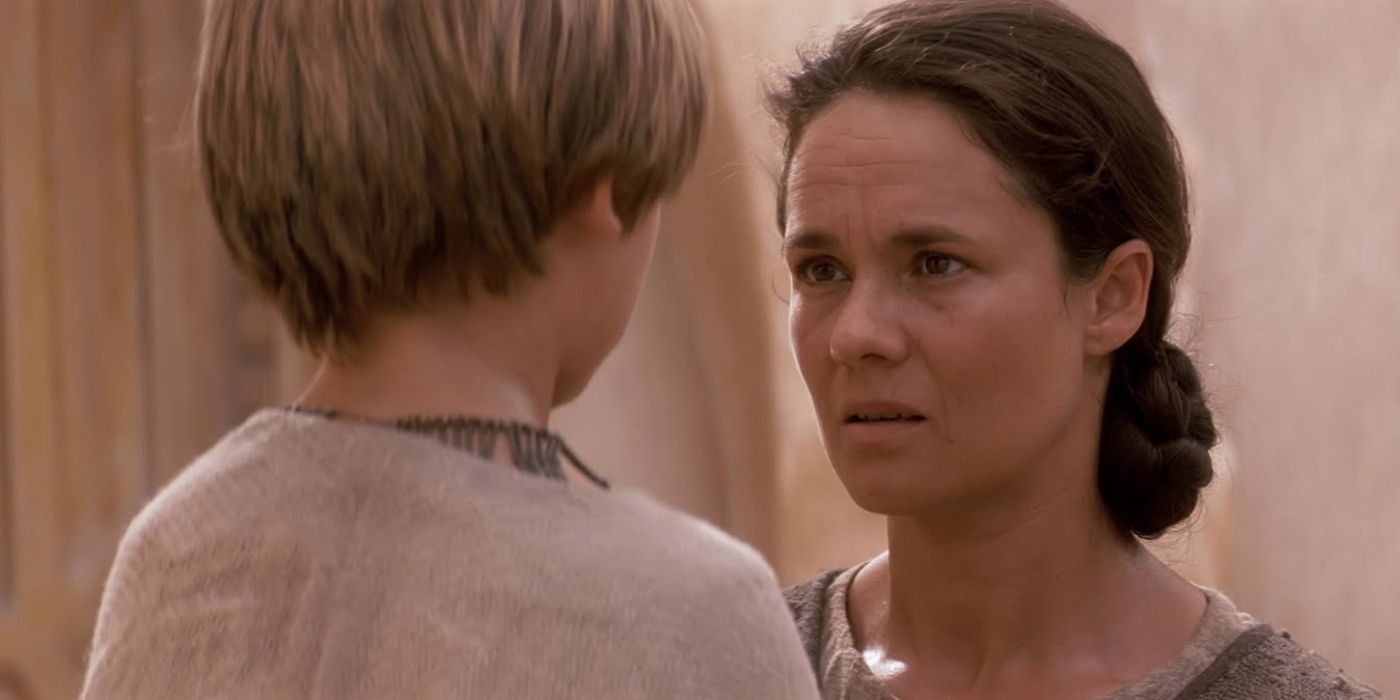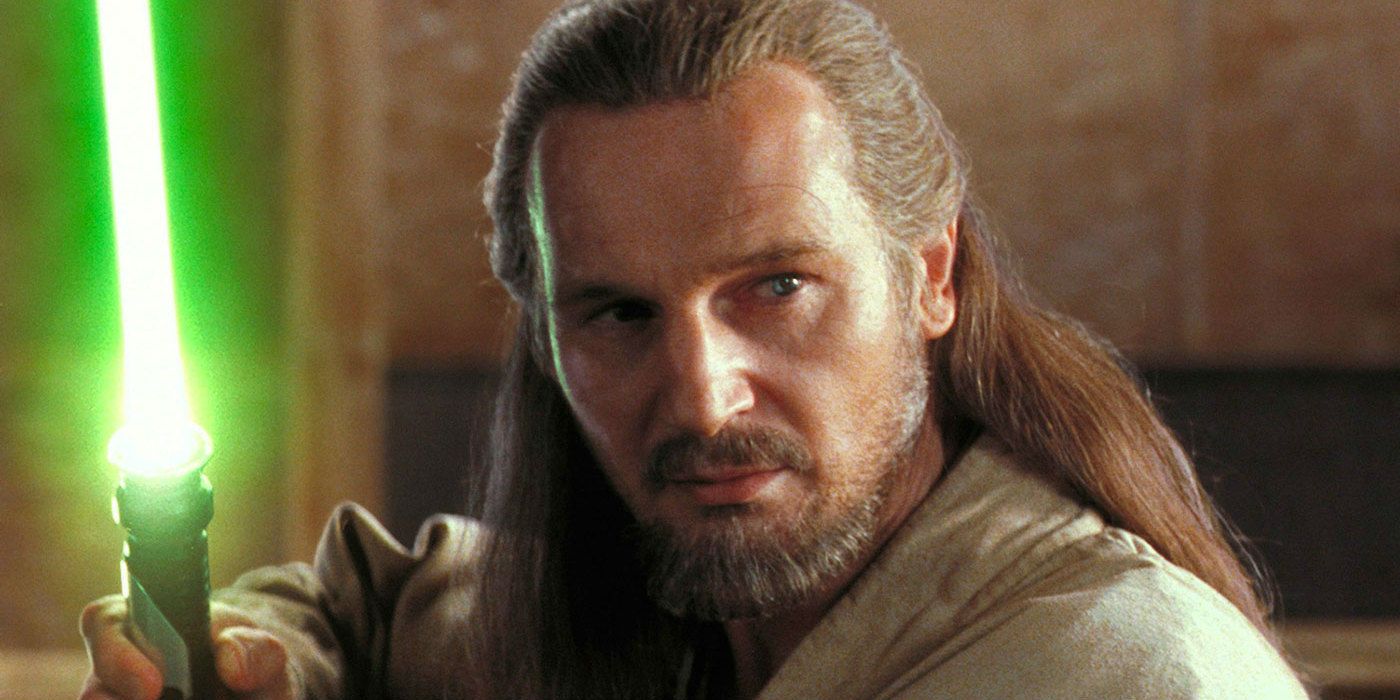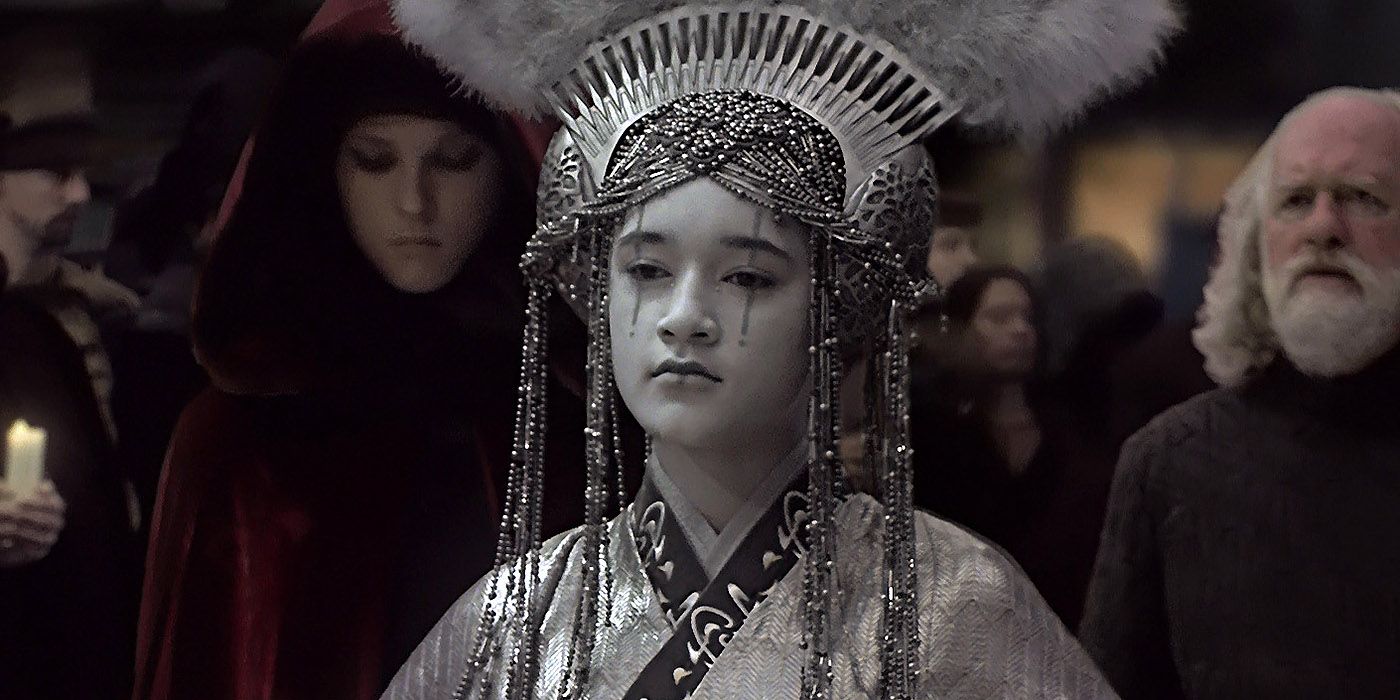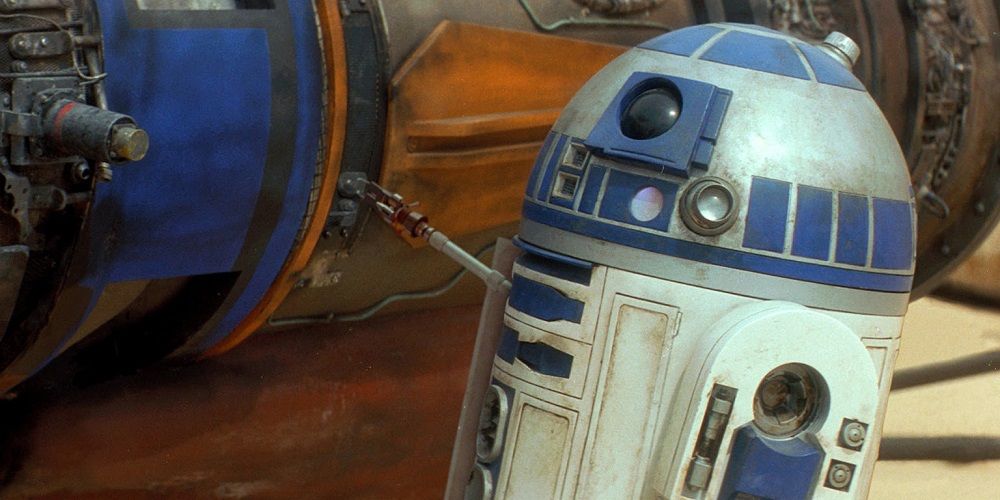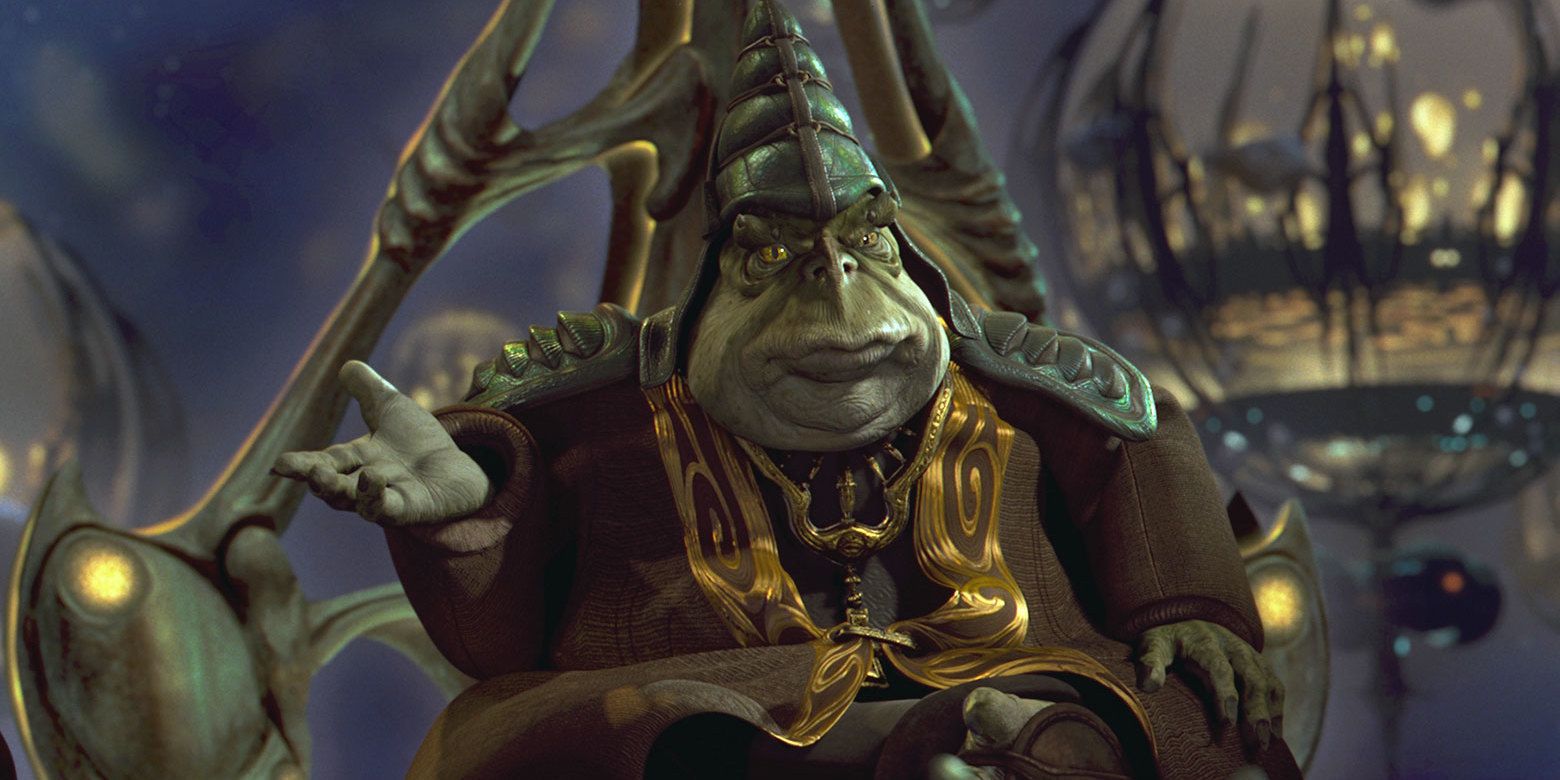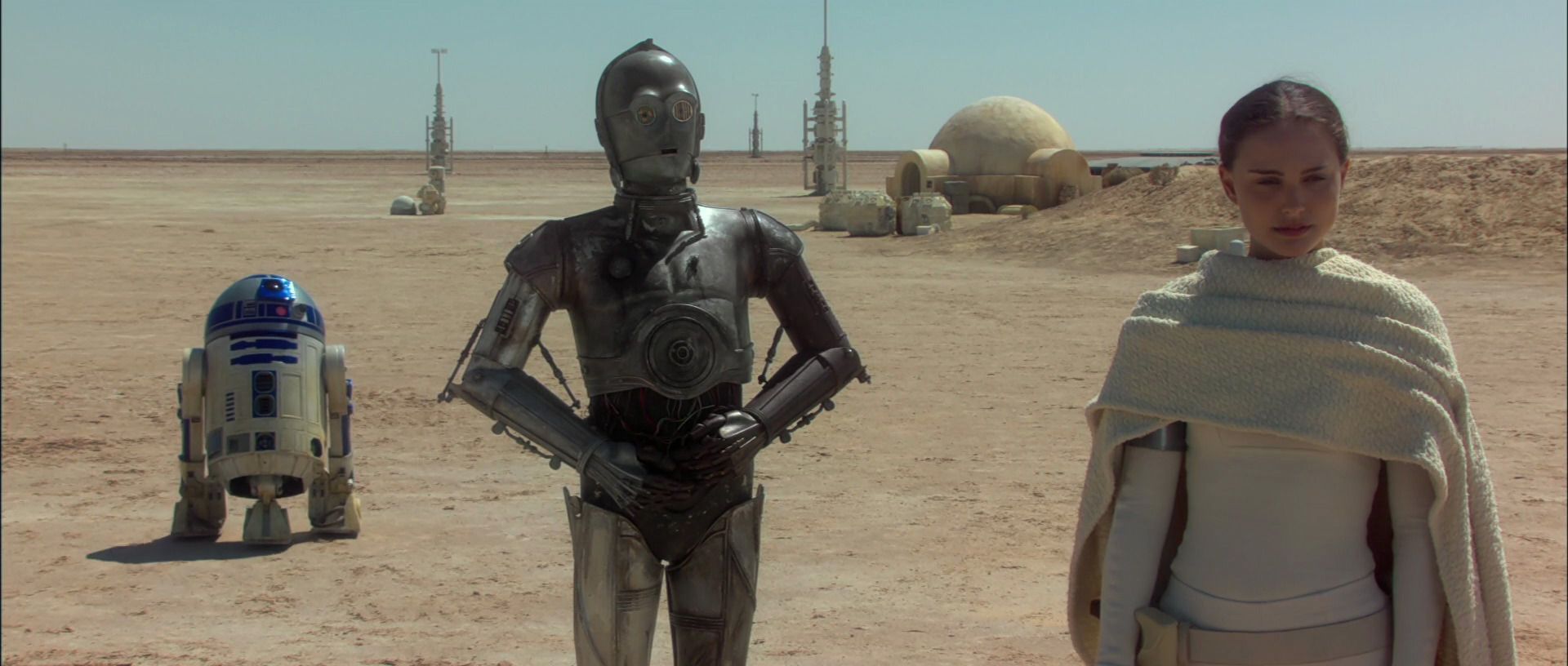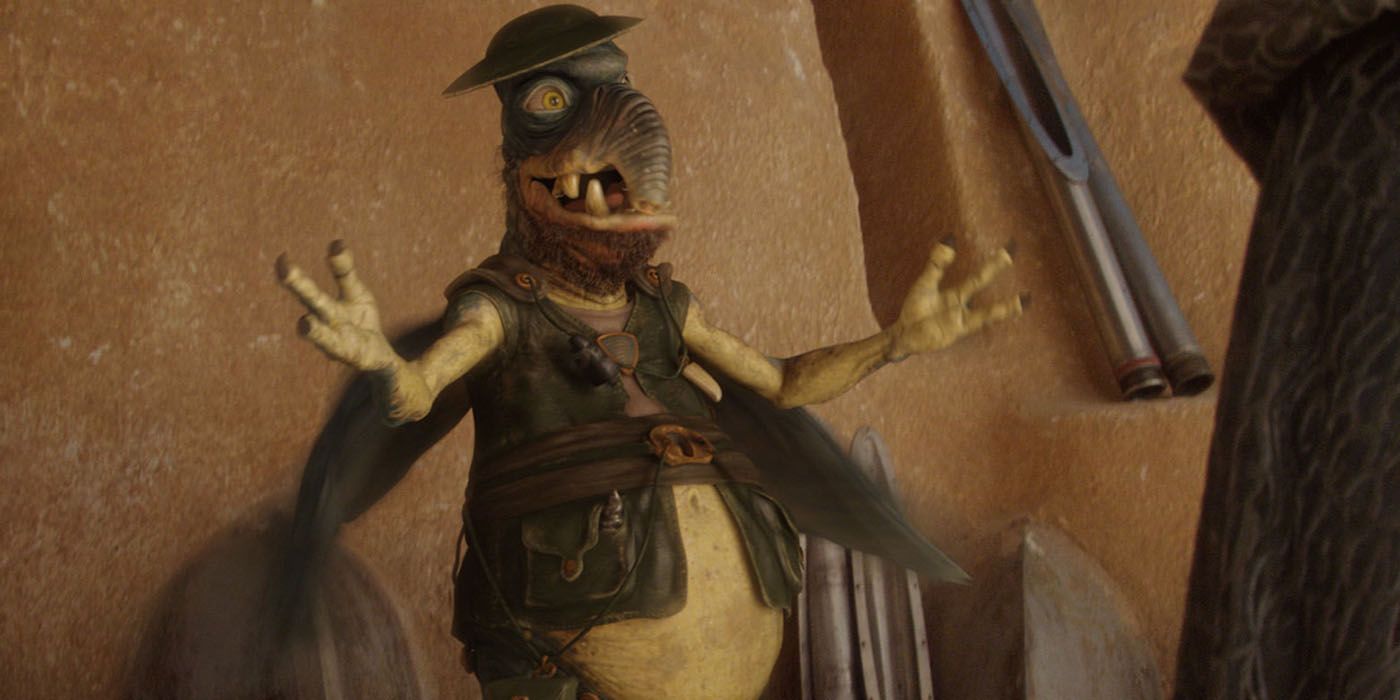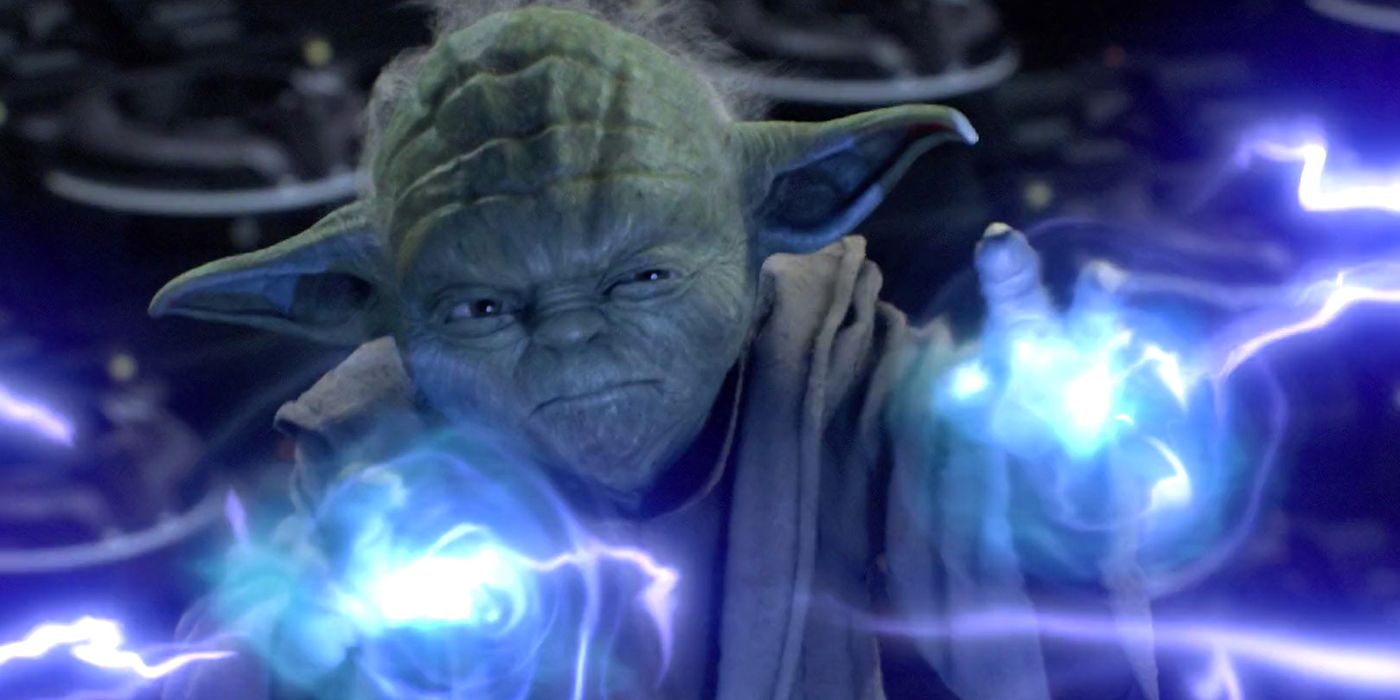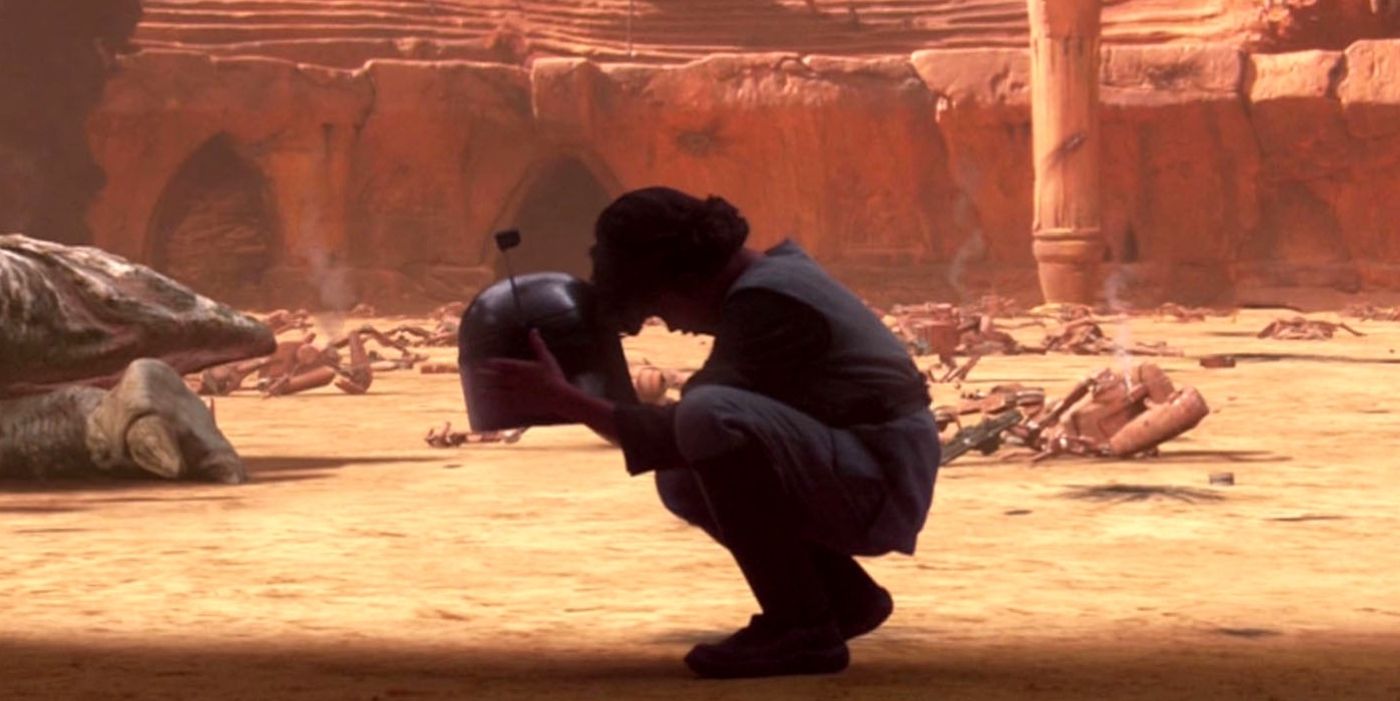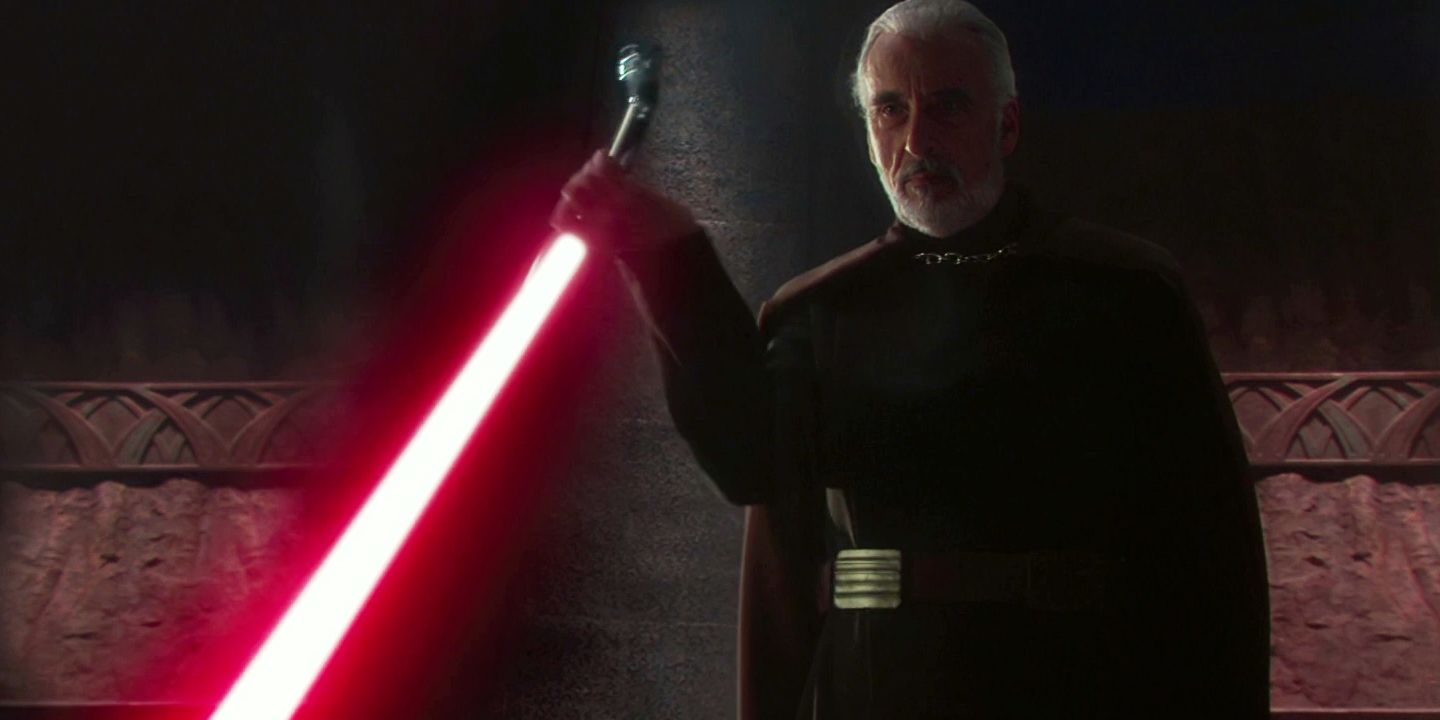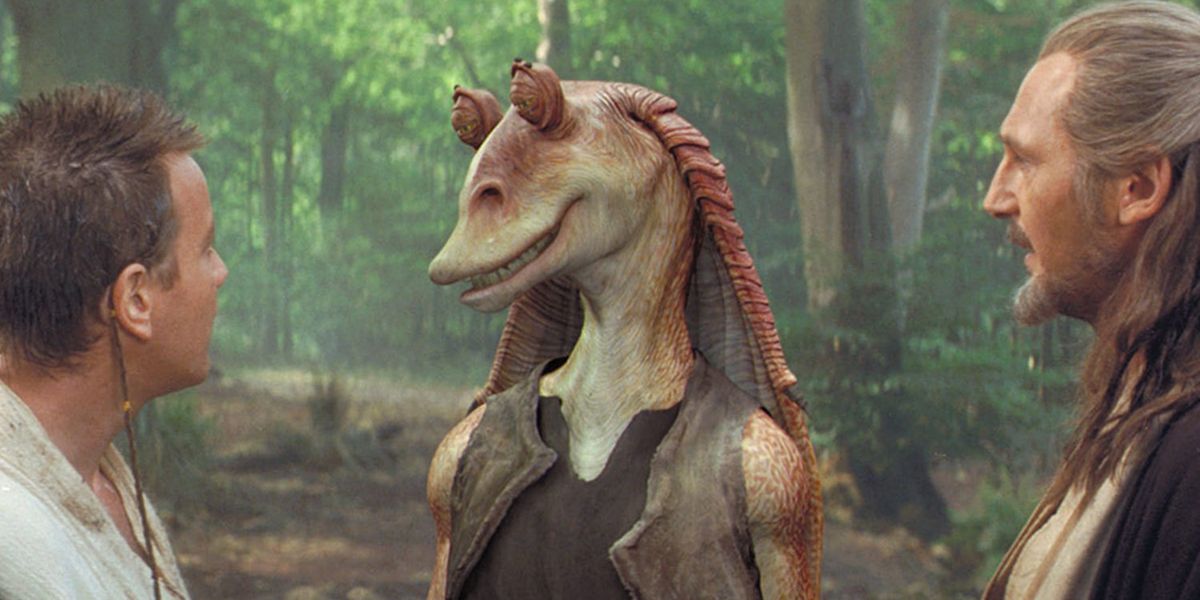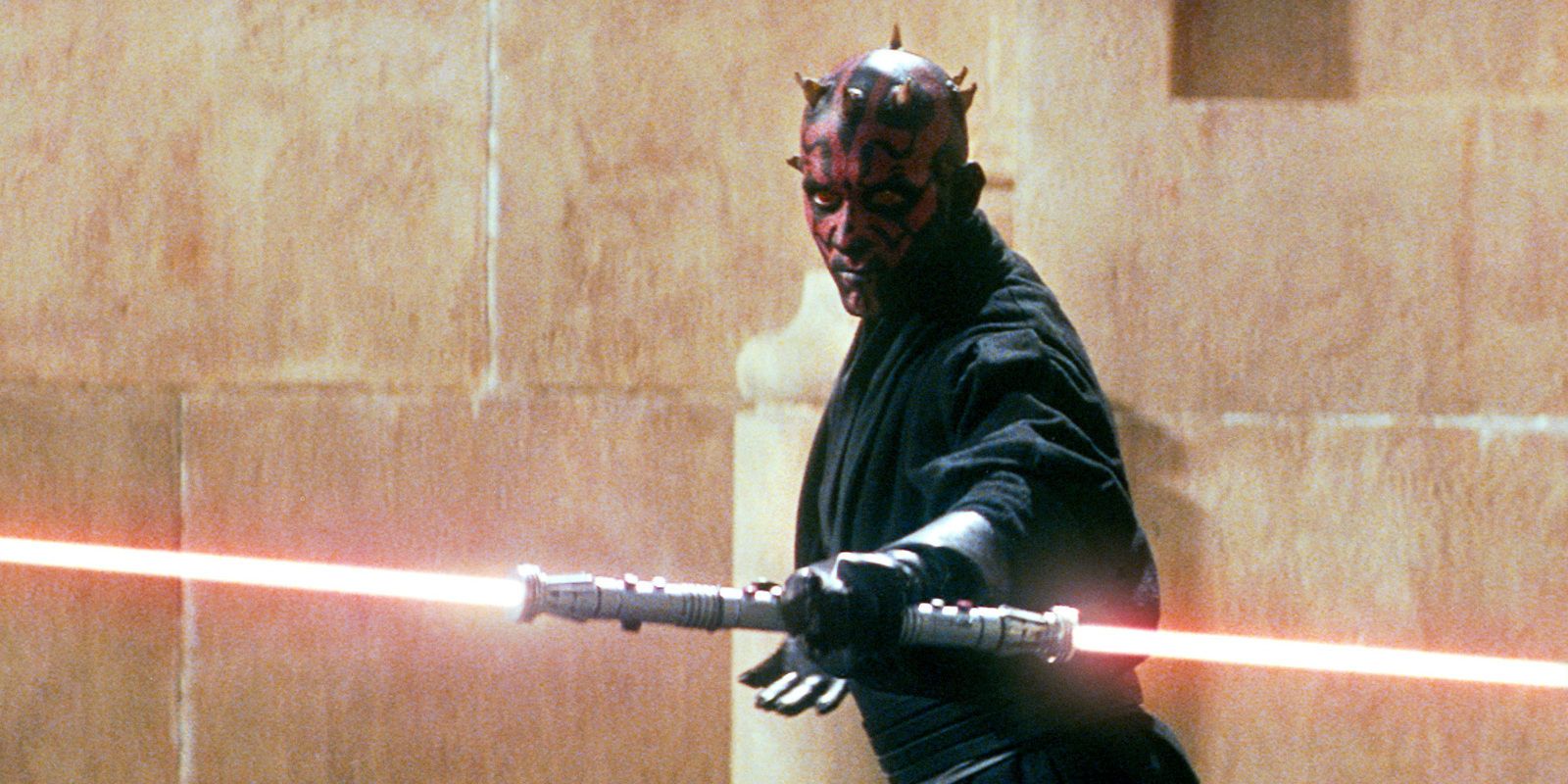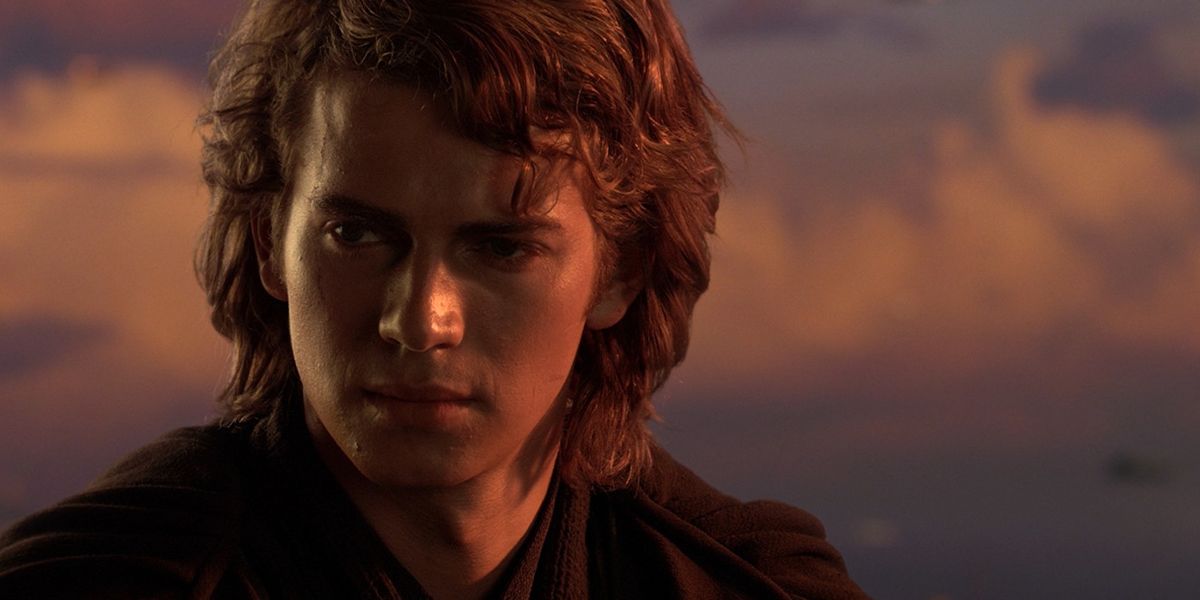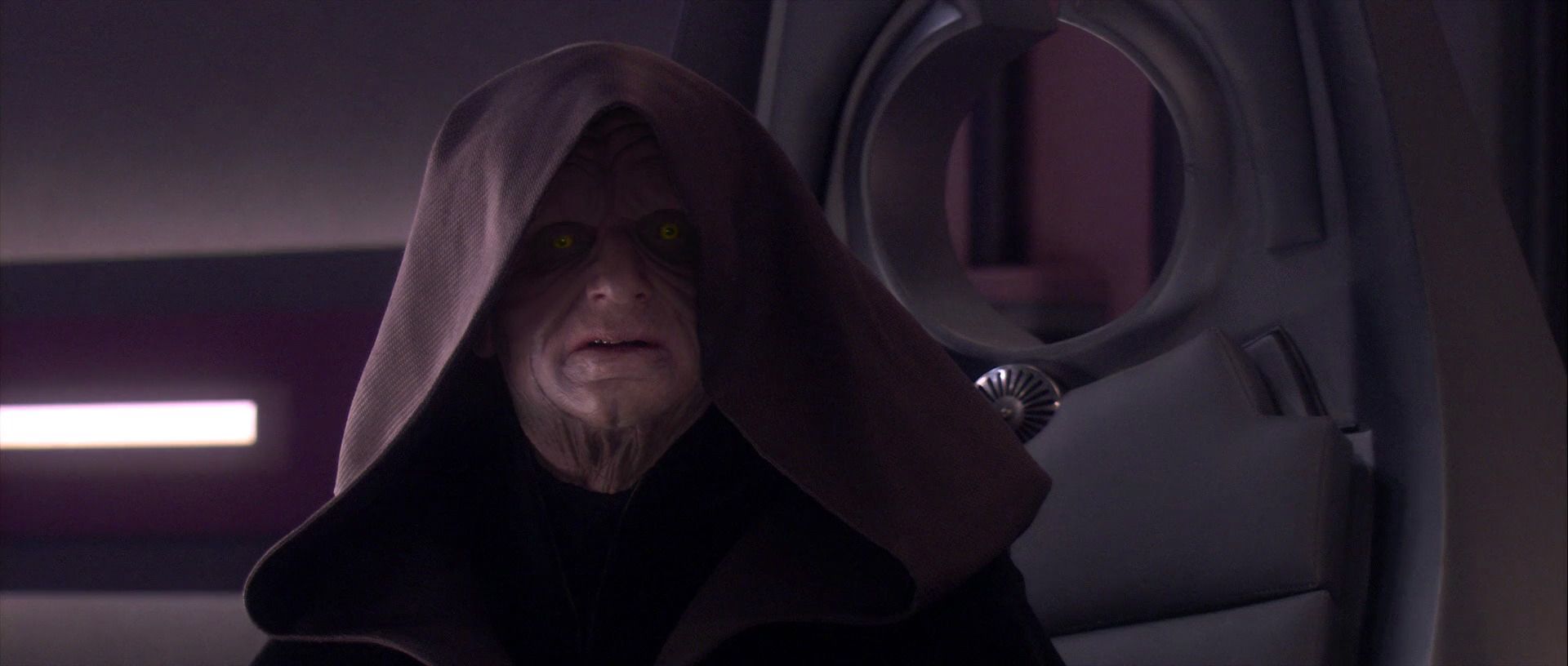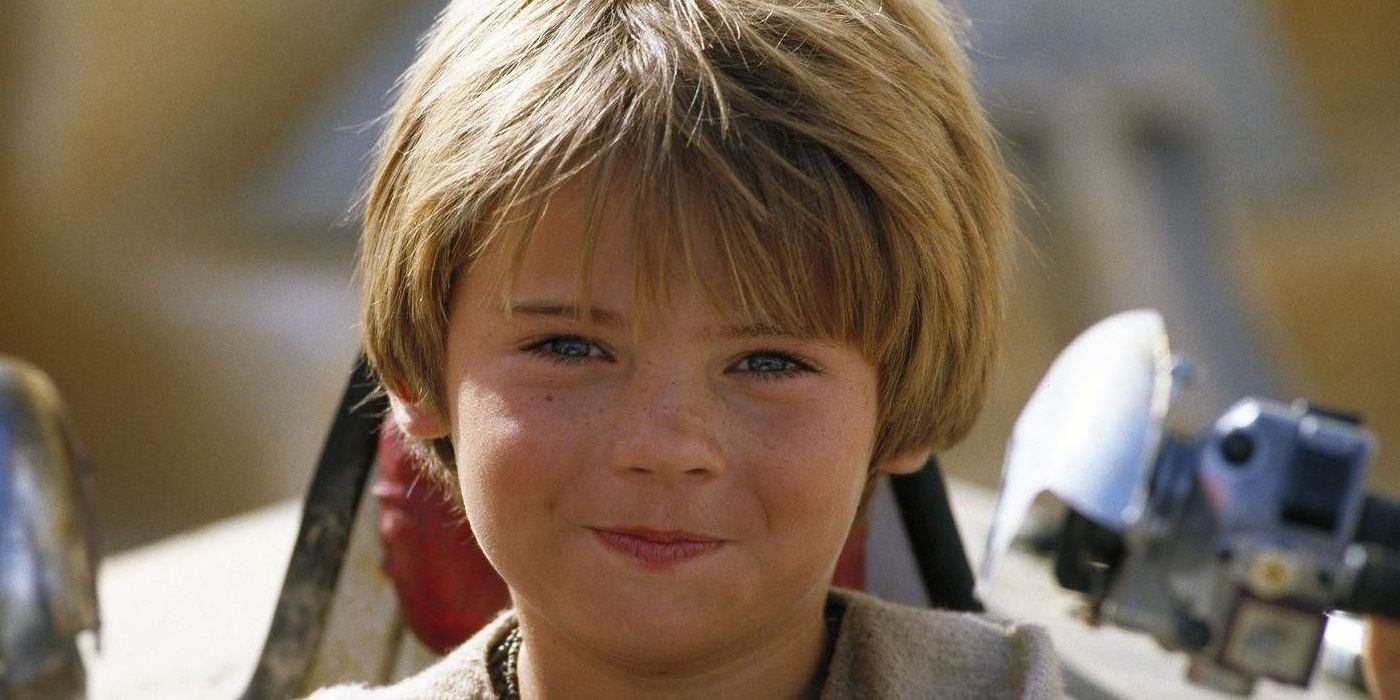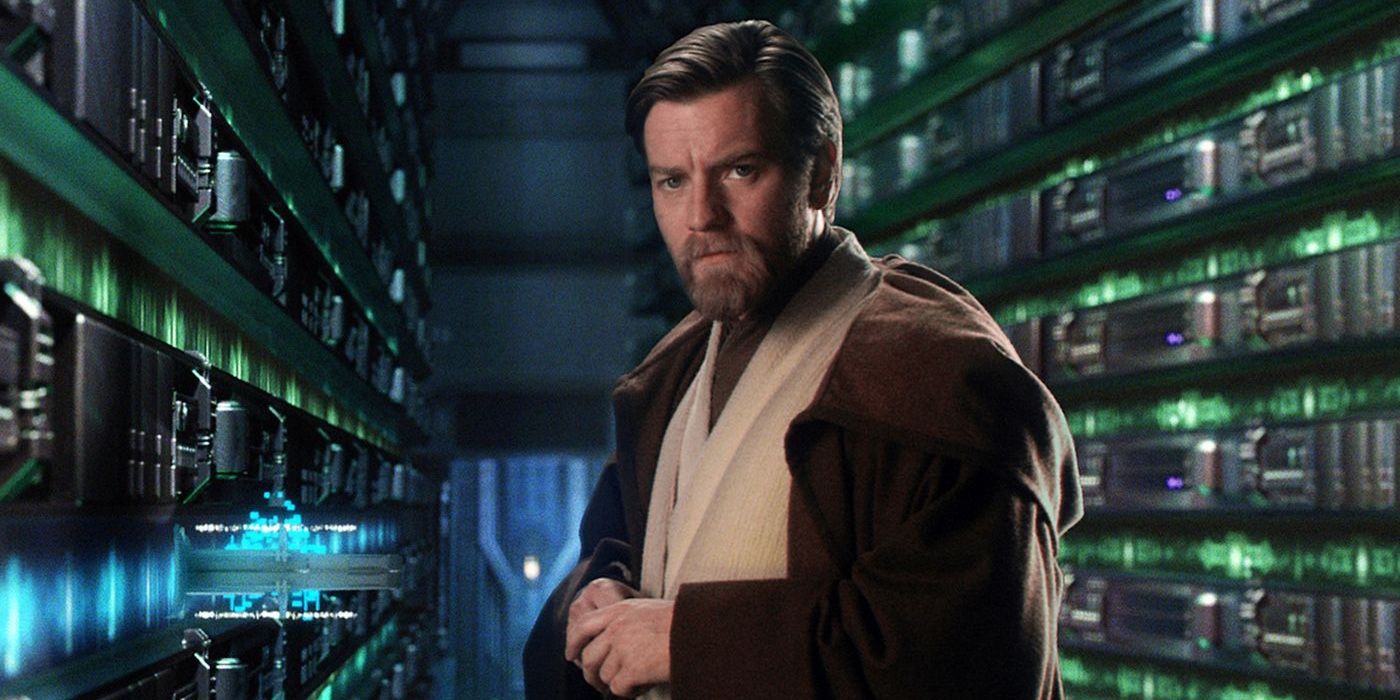When fans think of Star Wars, the things that spring to mind encompass the best parts of the galaxy far, far away. Jedi and the Dark Side. Droids and Stormtroopers. Lightsaber duels and space battles. Strange planets and even stranger creatures. John Williams fanfares and opening crawls. Then there are the parts of the narrative fans prefer to forget. While the prequel trilogy — 1999’s The Phantom Menace, 2002’s Attack of the Clones, and 2005’s Revenge of the Sith — features many of the things that made fans fall in love with Star Wars from the time the very first movie premiered in 1977, they also made missteps.
The prequel trilogy was meant to tell the complete story of Anakin Skywalker’s fall to the Dark Side. Fans couldn’t wait to see how the legendary Jedi become the villainous Darth Vader. Unfortunately, story was shoehorned into a larger narrative centering on a trade war and political machinations that didn’t exactly scream space adventure.
The prequels were also troubled by some casting choices that left fans mixed. The trilogy attracted some fantastic talent, but some of the actors fared significantly better than others for critics. In many cases, it’s hard to untangle whether it was the casting choices or the writing that didn't always work. In other instances, actors were arguably miscast.
Here, we explore 10 Casting Decisions That Hurt The Star Wars Prequels (And 10 That Saved it).
HURT: NATALIE PORTMAN
Today, Natalie Portman is known as an accomplished, Oscar-winning actor, but her future greatness was far from obvious when she starred as Padmé Amidala in the Star Wars prequels. Many of the issues with her role weren’t Portman’s fault, the love story she was a part of was a little too much, and the lines she was saddled with were terribly written.
Plus, her character’s trajectory was just depressing. Padmé starts the trilogy as a queen, becomes a senator, and by the third movie is a pregnant wife whose only activities seem to be worrying about her husband and waiting for him to come home. While she was stiff and unexpressive in the first film, by the last film she's a blubbering mess who loses her will to live. Padmé — and Portman— deserved better.
SAVED: JIMMY SMITS
Jimmy Smits didn’t have a large role in the prequels. In fact, most of his screen time as Senator Bail Organa was spent carting around Jedi and becoming the adoptive father of Leia. However, Smits' inherent charm and likeability gave the political events that ended the series weight and made fans care about what was going on in the Senate more than they might have otherwise.
In a movie full of characters of all stripes, Smits came across as the sober, dignified adult in the room. His embrace of the Jedi’s cause, the urgency of his actions to save them, and his reaction to the ending of the Republic elevated the rushed story arc that ended the third movie. Smits' status as a veteran actor was perfectly suited to the role he played.
HURT: TEMUERA MORRISON
As bounty hunter Jango Fett, Temuera Morrison is supposed to be one of the most dangerous men in the galaxy. He’s shown to be single-minded in pursuit of his quarry, cleverly attempting to complete his assigned mission without remorse or apology. In fact, he’s so good that there's a whole army of his clones.
Yet, Morrison’s portrayal falls flat. His performance doesn’t make the character seem clever or dangerous. Instead he comes across as one-dimensional and utilitarian. The man who’s supposed to always have a plan seems like he lacks much of an interior life. As a result, his performance doesn't amount to much more than serviceable. Given this is Boba Fett’s father, however, the character should inspire more from audiences than minor interest.
SAVED: SAMUEL L. JACKSON
No matter what character he’s playing, Samuel L. Jackson brings an air of casual cool to his roles. This makes him fun to watch in almost any movie, and his portrayal of Jedi Master Mace Windu is no exception. Over the three prequel movies, Jackson turned in one of the films’ most consistent performances as the leader, along with Yoda, of the Jedi High Council.
Jackson brought his signature charisma to the role, giving Windu’s wise pronouncements heft and meaning. Also, he was the only character in the prequels to wield a purple lightsaber — a choice that highlighted the uniqueness of the character and the man who played him. Windu finally met his demise during an ill-conceived bid to stop Chancellor Palpatine in the third film, and it was a shame to see him go.
HURT: PERNILLA AUGUST
Getting to know the man who would become Darth Vader as a child on Tatooine meant also meeting his mother, Shmi Skywalker. Pernilla August played Shmi as innocuous and passive. Someone who didn’t fight her poor circumstances or stand up for herself or her son. While that was what the script required, the performance failed to hint at any sort of conflict or life behind the character. She was the cardboard cut-out of a “good” mother — bland, uninteresting, and simply there to support her child.
After Anakin unsuccessfully attempts to rescue Shmi from the Tuskan Raiders who took her in Attack of the Clones, he slaughters the whole camp in a furious fit of vengeance. It’s the first time we see how low Anakin can go, although it’s hard to understand why Shmi inspires such rage in her long-lost son.
SAVED: LIAM NEESON
Liam Neeson’s take on Qui-Gon Jinn, the Jedi Master to Ewan McGregor’s padawan Obi-Wan Kenobi, is controversial among fans. Some enjoy his take on the Jedi and some find it difficult to take the character seriously. For our money, though, Neeson was one of the best things in Episode I — The Phantom Menace, the only film in the trilogy in which he appears. As the worst of the three prequels, the bar for excellence isn’t set that high, but it’s hard not to appreciate the depth Neeson brought to a role that could have been one-dimensional.
Jinn vacillates between wisdom and a touch of arrogance, and demonstrates his firm belief in Anakin by insisting the boy be trained as a Jedi. Many other actors would have a hard time pulling off Jinn's combination of wisdom and faith, but Neeson does so with ease.
HURT: KEISHA CASTLE-HUGHES
Keisha Castle-Hughes was nominated for an Oscar for her very first movie role in Whale Rider. She was only 13 at the time. Just a few short years later she made her appearance in Episode III — Revenge of the Sith as Apailana, the Queen of Naboo.
There really isn’t much to say about Castle-Hughes’ blink-an-you’ll-miss-it role. The character is very… white. Seriously, her costume and make-up? White. The role was mostly a reminder of how much work the women of Star Wars must have to put into their appearance — even when they’re attending a funeral. While it’s not unheard of for a celebrity to make a cameo in a big tentpole movie, it's not clear why Castle-Hughes’ talent was wasted in this role.
SAVED: KENNY BAKER
Kenny Baker has played R2-D2 since the little droid was introduced in Star Wars: Episode IV — A New Hope. While it’s impossible to see Baker behind the tin can that is the beloved droid, simply knowing he was there to make sure R2-D2’s characterization remained consistent was a welcome gift to fans.
By the end of the trilogy, Artoo and C-3PO had connected and kicked off their odd-couple chemistry. The familiarity of the characters and their silly banter was one of the bright spots in the films. At the same time, though, it’s hard not to wonder how everyone in the galaxy seems to understand Artoo’s bleeps and bloops regardless of what planet he's on.
HURT: BRIAN BLESSED
Brian Blessed is an accomplished stage and screen actor whose melodious voice has led to his casting in numerous voice roles. Star Wars fans can be forgiven for having no knowledge of this, though, given Blessed’s questionable performance as Boss Nass in The Phantom Menace. As the voice of the Gungan king, Blessed’s eloquence was buried under an array of unfortunate vocal ticks, from an offensive accent to a lot of random spitting and sputtering.
Much like fellow Gungan Jar Jar Binks, Boss Nass is accused of being a caricature. Fat and ignorant, the character didn’t come across as cute or comedic, but as an unfortunate stereotype. The role was a lost opportunity for the Star Wars universe. Blessed’s voice could have been used to much more potent effect.
SAVED: ANTHONY DANIELS
Like Kenny Baker’s return to his role as R2-D2, it was a joy for fans to get to see Anthony Daniels embody C-3PO once again in the prequel films. In fact, the prequels provided something of an origin story for the fussy droid, showing his beginnings at the hands of young Anakin Skywalker and how he inadvertently ended up participating in a number of pivotal events during the Republic's downfall.
Despite being made of metal, Daniels brought more personality to C-3PO than many of the prequel's actors brought to their human roles. Fans got to witness the droid’s hapless ways from the outset. The comic relief he provided was far more fun than any of the annoying “humor” Jar Jar Binks subjected fans to.
HURT: ANDY SECOMBE
Like several other characters in the prequels, particularly those in The Phantom Menace, Watto’s role had the whiff of a bad stereotype to it. As a slave owner with little on his mind beyond amassing more money, the winged character came across as anti-Semitic to many viewers. As the voice behind the Toydarian, Andy Secombe was stuck delivering Watto’s lines in a cringe-worthy accent that played up the character’s amoral greed.
Just as the blame for many of the other characters doesn’t lie solely with the actor, it’s unlikely Secombe came to his characterization of Watto on his own. The creature was probably the result of George Lucas’ misguided direction and writing. Still, Watto didn’t do anything to improve the scenes in which he appeared.
SAVED: FRANK OZ
Frank Oz famously voiced Yoda when he made his original appearance in Star Wars: Episode V — The Empire Strikes Back. After making such a big impact in the role, there was no way anyone else could have lent his voice to the character in future big screen installments. Thankfully, Oz was back as Yoda across all three prequels, once again uttering words of wisdom in the backward sentences that endeared him to fans decades earlier.
One of the best things about the prequel trilogy was that Yoda’s role was even bigger than it was in the original films. The story behind the reasons Yoda went into exile encompassed one of the most interesting parts of the prequels and Oz’s voice work provided a comforting continuity between the original films and the newer trilogy.
HURT: DANIEL LOGAN
Boba Fett is a fan favorite from the original Star Wars films, despite his brief appearance there. While it may have seemed like a good idea to take advantage of that fan love by showing him as a young boy in Attack of the Clones, the appearance did more harm than good. Daniel Logan's portrayal of Boba as a petulant child removed the mystery from the character.
Furthermore, Logan’s depiction gave no indication that the character could ever turn into the calculating bounty hunter fans adored. Instead, Logan seemed miscast and out of place. The only indication of what the character could become happened when he witnessed his father’s downfall at the hands of Mace Windu. A moment that seemed to be setting up something more interesting, but then never went any further.
SAVED: CHRISTOPHER LEE
In the early and mid-2000s, Christopher Lee pretty much perfected the art of playing the double-crossing bad guy. Between his appearance in the final two Star Wars prequels and his concurrent depiction of Saruman in The Lord of the Rings trilogy, Lee was specializing in a specific kind of bad guy. Luckily Lee was exceptional at bringing gravity to the these fallen characters, no matter how fantastical they were.
Lee wore Count Dooku’s treachery convincingly, bringing nuance to his characterization of a man who had fallen to the Dark Side. In fact, Lee projected a great deal just with his eyes. When he realizes his Sith Master has turned on him, you almost feel sorry for him, despite his prior evil deeds.
HURT: AHMED BEST
No rundown of poor casting choices in the Star Wars prequels would be complete without mentioning Ahmed Best’s unfortunate turn as the reviled Jar Jar Binks. However, after almost 20 years of negativity, calling out this character feels a lot like piling on. At this point even non-fans know the knocks against Jar Jar — he’s an annoying, unfunny caricature whose slapstick shenanigans and unfortunate speech patterns left Star Wars fans everywhere perplexed and angry.
The backlash against Jar Jar was swift and lacerating. Despite all that, it’s hard to blame Best for doing what he was directed to do. The bigger question is why amongst the legions of people the prequels had to pass muster with, no one in George Lucas’ orbit got him to reconsider the wisdom of including such a terrible character in the films.
SAVED: RAY PARK
As Darth Maul, Ray Park doesn’t exactly achieve new heights in dramatic acting. In fact, it could be argued that his costume and make-up do most of the acting work for him. Nonetheless, it’s hard to argue with the menacing potency of his character as he relentlessly pursues Qui-Gon Jinn and Obi-Wan Kenobi in The Phantom Menace.
Ultimately, Darth Maul is most fascinating during his fight scenes, and that’s really the way it should be. He projects an air of quiet determination and danger as he takes on his enemies, putting his all into a duel that is one of the best things about the first prequel film. While Darth Maul’s personality is better fleshed out in other stories, he brought some much-needed stakes and excitement to The Phantom Menace.
HURT: HAYDEN CHRISTENSEN
As the teenage and young adult Anakin Skywalker, Hayden Christensen had to deal with bad dialogue and a poorly paced character arc, so it’s understandable why it was hard for the actor to make the story of Anakin’s development into Darth Vader land. Yet, along with those problems, Christensen seemed miscast in the role as well.
Christensen portrayed Anakin as a whiny adolescent, someone who was mad because he wasn’t being taken seriously and too young to understand why. In any other story, this would just be a phase that a character would grow out of, but in the prequels, this is the start of Anakin’s turn to the Dark Side. Anakin’s transition to Darth Vader isn’t believable nor is his romance with Padmé Amidala. Between Christensen’s questionable casting and the filmmakers' poor execution, the biggest events of the prequel trilogy don’t work.
SAVED: IAN MCDIARMID
Ian McDiarmid’s Senator-turned-Chancellor Palpatine was one of the most compelling characters in the prequel films. As the supposedly upstanding politician who lies and manipulates his way to greater and greater power, McDiarmid gave a masterful performance that’s endlessly fascinating to watch.
Palpatine’s arc from Senator to Emperor is truly compelling and utterly convincing in McDiarmid’s hands. As he manages to play both ends against the middle, bring down the Jedi order, and set up Anakin Skywalker’s downfall, the character’s evil depths are slowly revealed. McDiarmid managed to recapture the character from the original trilogy while convincingly depicting the Emperor’s backstory in a performance that never falls prey to some of the troubles encountered by his co-stars.
HURT: JAKE LLOYD
It feels wrong to criticize a child, even if that child is playing one of the most pivotal characters in all of filmdom. Unfortunately, Jake Lloyd’s portrayal of a young Anakin Skywalker came across so poorly it’s hard to overlook how much the trilogy suffered for it. Much like Hayden Christensen's portrayal of Anakin when he got a bit older, Lloyd seemed miscast. He had trouble bringing any sort of life or humanity to his role, an unfortunate beginning for the character who was supposed to be the centerpiece of the prequels.
Of course, this wasn’t all Lloyd’s fault. Many fans have pointed out that Anakin should never have been presented at such a young age in the first place. Not only did it make his scenes with his future wife, Padmé Amidala, super-uncomfortable, but it also made him difficult to take seriously as an accomplished inventor and pod racer.
SAVED: EWAN MCGREGOR
One of the highlights of the prequels was Ewan McGregor’s depiction of Obi-Wan Kenobi. He starts out as Qui-Gon Jinn’s padawan in The Phantom Menace, becomes mentor and Master to Anakin in Attack of the Clones, and closes the series by mourning the loss of his protegee, while vowing to protect Skywalker's son in Revenge of the Sith.
McGregor shows the character’s development throughout the three films and in the process does a wonderful job playing the younger counterpart to Alec Guinness' Obi-Wan in A New Hope. McGregor's portrayal is so beloved that fans have expressed their desire to see him reprise the role in some capacity for years. McGregor says he’d be open to returning to Obi-Wan, so it could happen at some point.
---
Do you agree or disagree with these casting decisions in Star Wars? Let us know in the comments!


